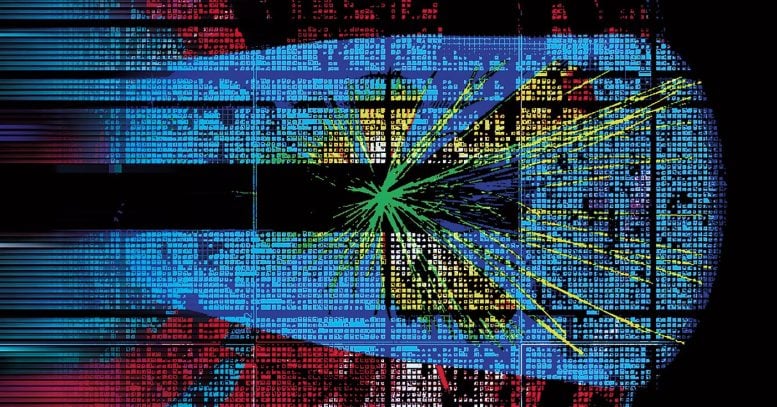
The ATLAS and CMS collaborations are using state-of-the-art machine learning techniques to search for exotic-looking collisions that could indicate new physics. Credit: S Sioni/CMS-PHO-EVENTS-2021-004-2/M Rayner
Artificial intelligence is revolutionizing how new particles are detected in LHC experiments.
By training AI to recognize and differentiate between typical and atypical jets, researchers can identify potential new physics hidden within particle collisions. Recent advancements were highlighted at a physics conference, showing the progress and potential of these AI applications.
One of the primary goals of the Large Hadron Collider (LHC) experiments is to look for signs of new particles, which could explain many of the unsolved mysteries in physics. Often, searches for new physics are designed to look for one specific type of new particle at a time, using theoretical predictions as a guide. But what about searching for unpredicted – and unexpected – new particles?
Sifting through the billions of collisions that occur in the LHC experiments without knowing exactly what to look for would be a mammoth task for physicists. So, instead of combing through the data and looking for anomalies, the ATLAS and CMS collaborations are letting artificial intelligence (AI) streamline the process.
AI Advancements in Particle Detection
At the Rencontres de Moriond conference on March 26, physicists from the CMS collaboration presented the latest results obtained by using various machine learning techniques to search for pairs of “jets.” These jets are collimated sprays of particles originating from strongly interacting quarks and gluons. They are particularly difficult to analyze, but they could be hiding new physics.
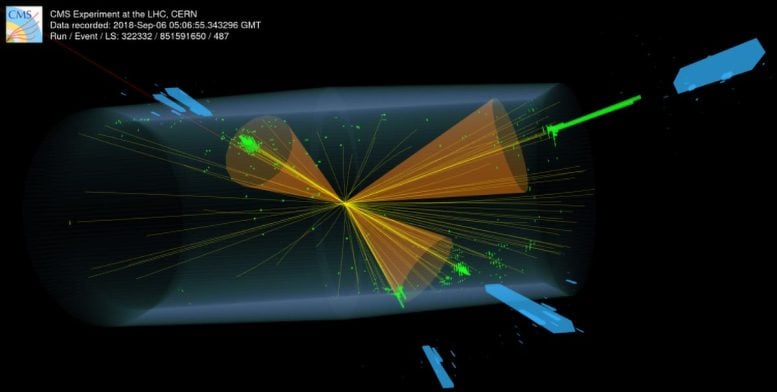
Event display of one of the CMS events determined by the AI algorithm to be highly anomalous and therefore potentially coming from a new particle. Credit: CMS collaboration
Techniques in AI Training for Physics
Researchers at ATLAS and CMS use several strategies to train AI algorithms in their searches for jets. By studying the shape of their complex energy signatures, scientists can determine what particle created the jet. Using real collision data, physicists at both experiments are training their AI to recognise the characteristics of jets originating from known particles. The AI is then able to differentiate between these jets and atypical jet signatures, which potentially indicate new interactions. These would show up as an accumulation of atypical jets in the data set.
Another method involves instructing the AI algorithm to consider the entire collision event and look for anomalous features in the different particles detected. These anomalous features may indicate the presence of new particles. This technique was demonstrated in a paper released by ATLAS in July 2023, which featured one of the first uses of unsupervised machine learning in an LHC result. At CMS, a different approach involves physicists creating simulated examples of potential new signals and then tasking the AI with identifying collisions in the real data that are different to regular jets but resemble the simulation.
Machine Learning’s Impact on Particle Physics
In the latest results presented by CMS, each AI training method exhibited varying sensitivities to different types of new particles, and no single algorithm proved to be the best. The CMS team was able to limit the rate of production of several different types of particles that produce anomalous jets. They were also able to show that the AI-led algorithms significantly enhanced the sensitivity to a wide range of particle signatures in comparison to traditional techniques.
These results show how machine learning is revolutionizing the search for new physics. “We already have ideas about how to further improve the algorithms and apply them to different parts of the data to search for several kinds of particles,” says Oz Amram, from the CMS analysis team.


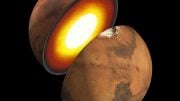
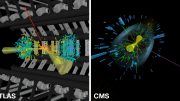
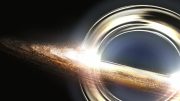
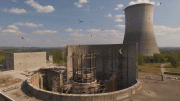

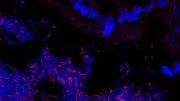
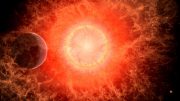
Interesting.
However, the new particles are endless, what researchers observe at the Large Hadron Collider can never be the essence of nature. AI based on topological vortex self-organization may be the focus of future technology.
Topological vortices are point defects in spacetime. Point defects do not only are central to kinetic processes, but also impact the thermodynamic properties. Can topological vortices self-organize into complex space-time structures via superposition, deflection, and twisting?
The Physical Review Letters firmly believes that two sets of high-dimensional spacetime objects (such as two sets of cobalt-60) can rotate in reverse and form two objects that mirror each other. This blatant dirtiness and ugliness is unprecedented in the history of scientific and humanistic development in human society. It should be more of a shame.
If researchers are really interested in science and physics, you can browse https://zhuanlan.zhihu.com/p/693933588, and https://zhuanlan.zhihu.com/p/595280873, and https://zhuanlan.zhihu.com/p/701032654.
A minimal error or deviation may result in wide divergence. Scientific research guided by correct theories can help humanity avoid detours and failures.
“Topological vortices” – what a load of pseudo scientific gobbledygook
Science and pseudoscience are not determined by a publication, an organization or a person, nor by you or me, but by mathematics the final say. Physical models must be based on mathematics or mathematical models in order to be scientific, convincing, and in accordance with natural laws.
Dark Matter seems to be the focus of intensive collider particles research. My coming 3rd cosmology book will elaborate an its pros and cons as effectively as possible.
Collider research is focused on new physics. The greatest challenge is what is deemed to be good or unproductive collider physics. I am surprised to see so much funds consumed by unproductive objectives and methodology.
Most collider researchers are vehemently searching for new physics. Many others are looking for new particles for contemporary physics is unanimous that over 90 % of the mass of the universe is totally unknown to science. That kind of dramatic impact if elucidated could be hiding trillions of dollars of potential but hidden wealth. My coming third book to be published in a few months will elaborate significantly.